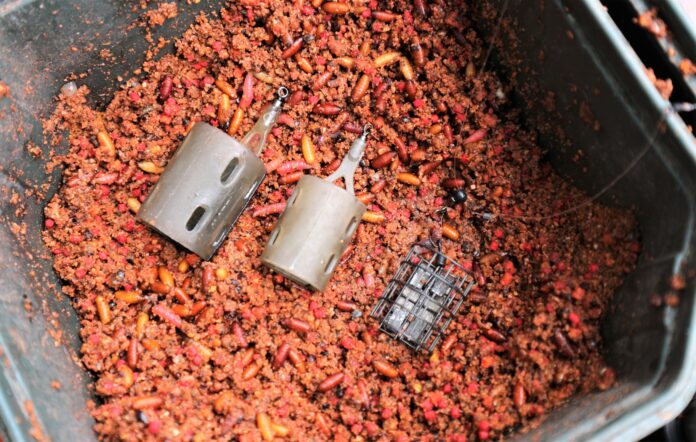QUIVERTIP SCIENCE
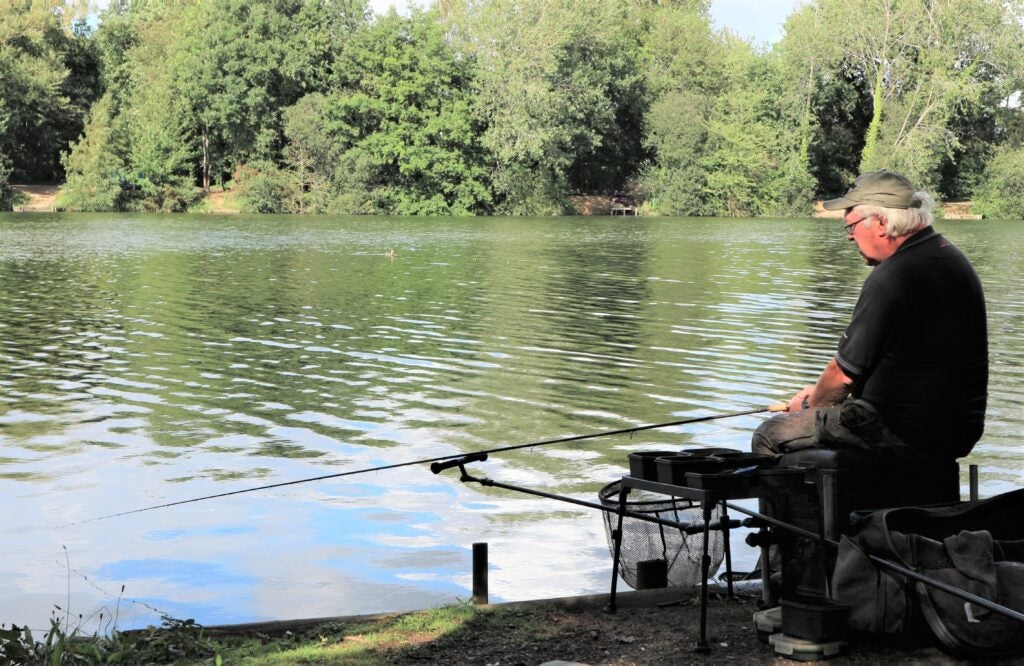

I like to have the top eye of a quivertip almost dimpling the surface when it’s calm, setting it slightly higher up when it’s windy, which stops wave motion from rocking the rod about. Some people get confused about the correct strength quivertip to use, not just with groundbait feeders, but across the board. My answer is the lightest you can get away with, whatever the feeder design you have on your rig. A sensitive 3/4oz carbon quivertip shows up just about everything, moving up to 1oz if there’s any tow, or 1.5oz when fishing long-range and for medium-paced river swims. The aim is to only have a slight bend in the indicator, to help highlight delicate bites better and present minimal resistance to taking fish. Stiffer quivertips only come into play in fast-flowing water, or if a switch is made to in-line feeders, such as method, pellet, or hybrid designs. Any of the latter can help to turn a session around if a groundbait feeder struggles to produce.
SIZE MATTERS
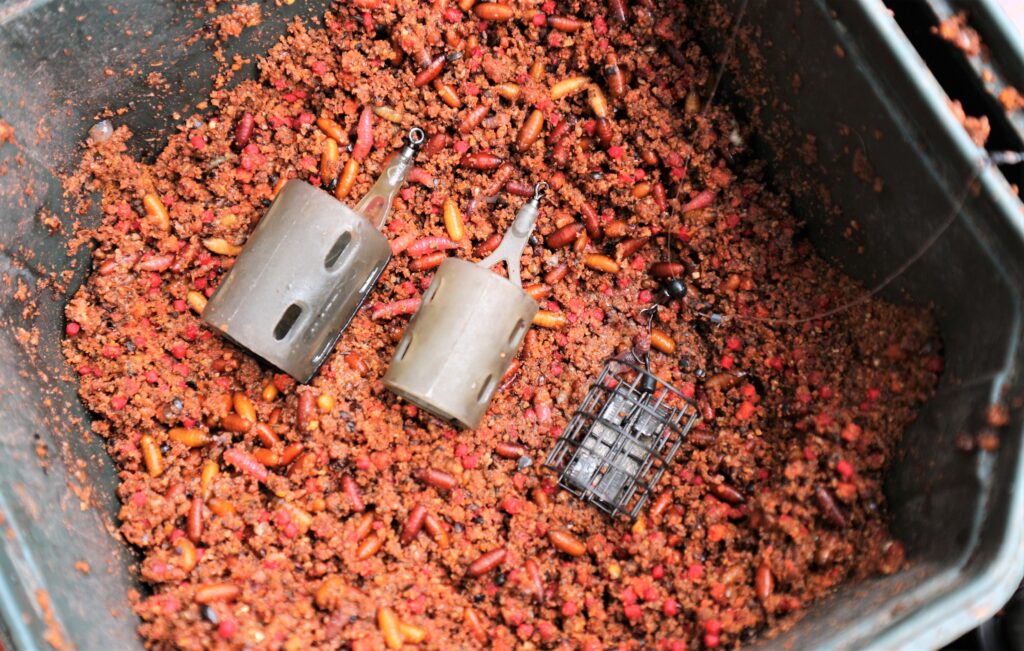

It’s common when groundbait feeder fishing to experience a quick flurry of bites from the off and then find the action slowing down. One of the most common mistakes I see, is anglers sticking with the same feeder throughout a session. In my experience it pays to swop feeder sizes and designs around. Very often I will start with a slightly bigger open ender than I really need, just to get a bit of extra grub in the swim as quickly as I can. This normally encourages a flurry of early bites, but as soon as the action slows, I switch to a smaller feeder. Very often the bites will then continue non-stop. It’s well worth trying a cage design too, which helps to make the load escape faster and more actively. Spodding in lots of bait is currently all the craze, but generally this attacking way only suits big venues where bumper catches are possible. On most fisheries where groundbait feeders work best, a gently, gently approach is better, feeling your way in.
CONTROLLED ATTACK
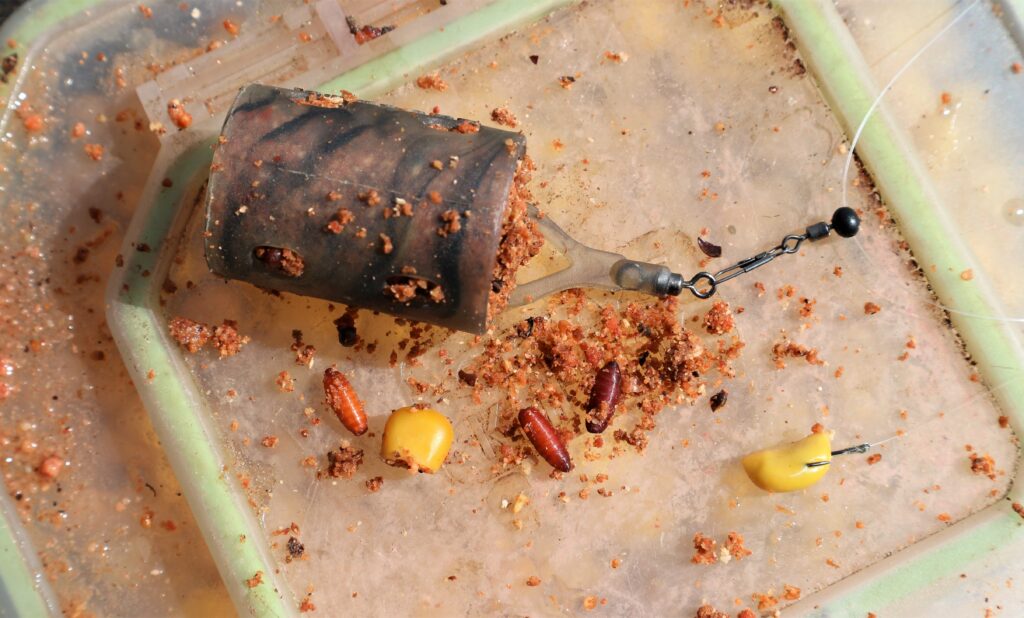

Even if you don’t spod lots of bait in at the start, it’s still possible to be positive, using a bigger feeder size, crammed full of freebies like casters, chopped worm and sweetcorn. Groundbait consistencies vary a lot too, from rich big fish mixes, to much finer and lower feed recipes. It’s often a case of modifying your approach to suit as sessions progress. If filling a swim in doesn’t work, that’s your lot. However, as mentioned previously, it’s easy to drop down a feeder size to keep the fish coming. You can also experiment with the amount of free offerings fed in groundbait, to discover what works best. Sometimes it’s plenty of chopped worm and caster, while on other occasions bigger tempters like sweetcorn or pellets are required, especially if small fish are a problem. Although positive groundbait feeder rigs often score well, both on rivers and stillwaters, many of my biggest hauls have resulted after following a much stealthier approach.
TREADING CAREFULLY
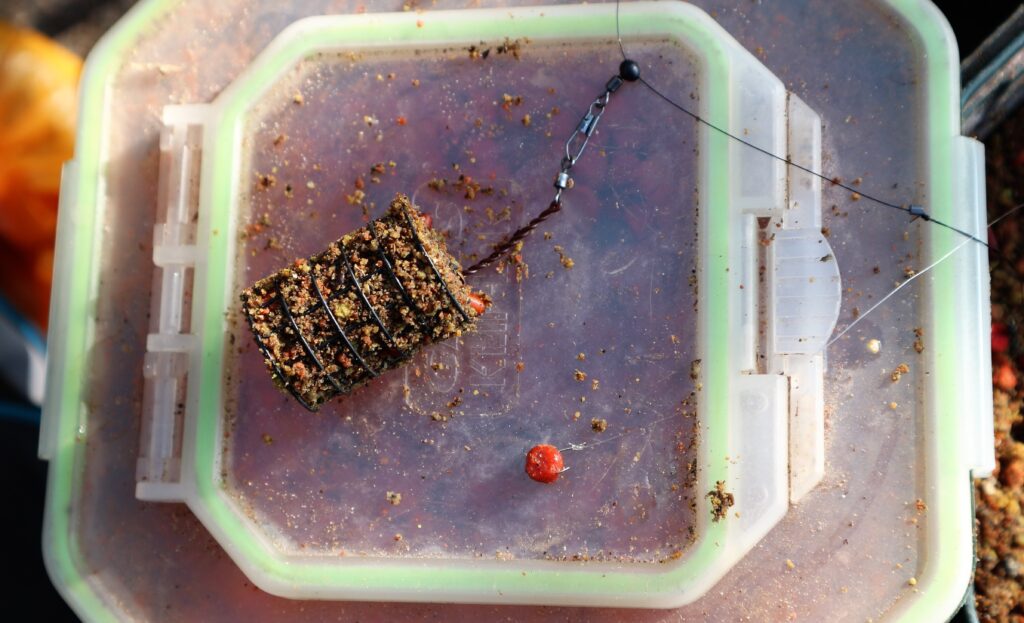

Wire cages are very versatile. You can cram them with free stuff and very little groundbait, or use mainly groundbait and not much else. You can pack in a stiffish mix, so it releases slowly, or play about with dry or wet consistencies, to achieve different fish-attracting cloud effects. Cage feeders often work best on wild venues using an active non-fishmeal groundbait, well laced with chopped worm, hemp and casters. On places that see plenty of pellets and boilies, replace the hemp with micro pellets and switch to a fishmeal or pellet-based groundbait. Whichever mode I use, I like to start with red maggot hook baits, later trying casters and segments of worm. If bream are about, worm and caster cocktails are hard to beat, while for skimmers, dead reds or small soft hooker pellets are worth a try. If I want to avoid carp, I keep soft pellet hook baits on the small side. Double or treble red pinkies are also very good for targeting silver fish.
WEIGHT BUILDING
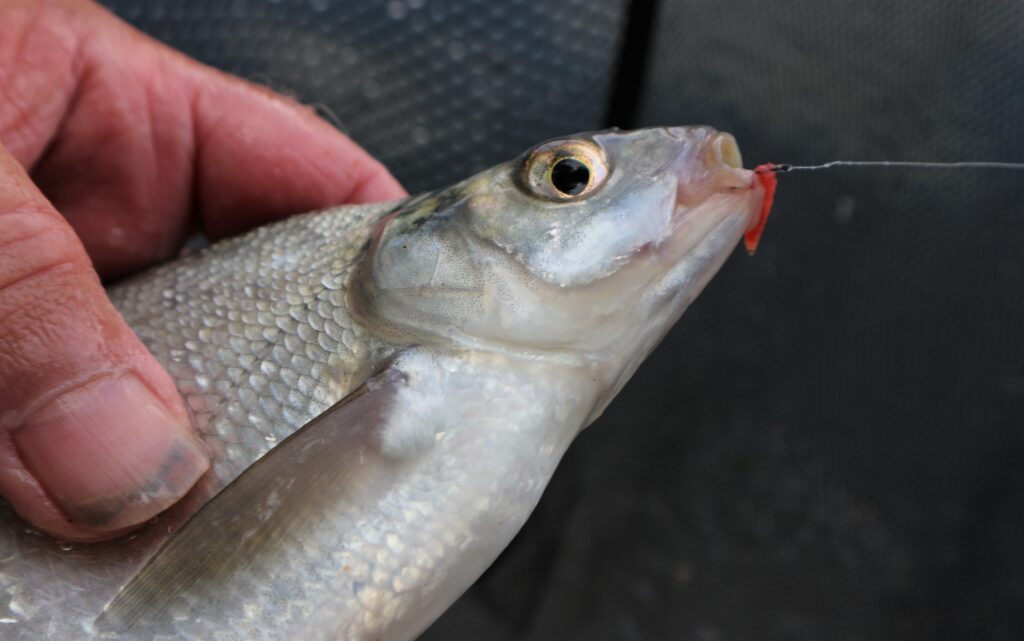

In an ideal world, the thought of sitting on a huge shoal of bream, bagging bronze slabs all day long is what we all hope for. But in reality, big bream can be fickle feeders, even on venues well noted for them. It’s more often a case of swim building, catching smaller skimmers and other silver fish first, before bigger samples move in. Sometimes they do, while on many occasions they don’t, but at least putting a decent catch of skimmers together is interesting. These fish can be frustrating, often fizzing over groundbait, but not giving many indications on a quivertip. In this instance it pays to keep experimenting by changing what’s on the hook. The same applies when chasing after other species like roach, especially bigger ones, which tend to only lightly mouth many types of baits. A good trick here is to try a single caster or maggot on a small hook, occasionally twitching the rig in by a couple of inches. This often provokes savage takes and finds larger fish.
KEEPING BUSY
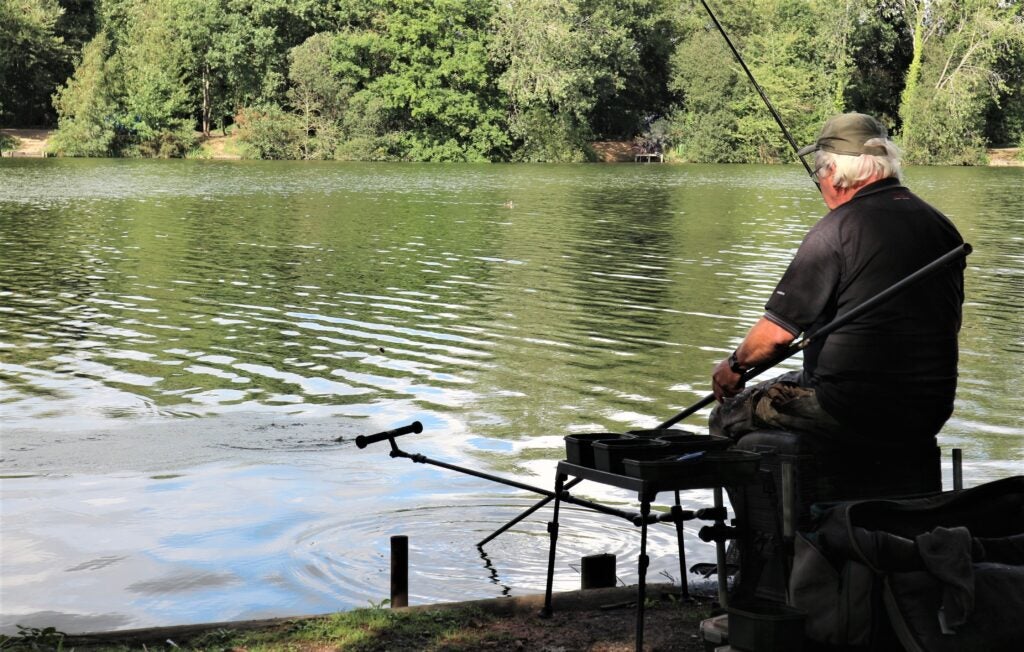

A new way of feeder fishing has evolved, where anglers time their casting, to try and maximise returns. This might involve launching a feeder out every few minutes for the first part of a session, to help build the swim up, only slowing things down when the fish arrive. Even then, some people like to try and gauge how long on average a positive bite takes, winding in and reloading the feeder if no indications are forthcoming once that time has elapsed. It certainly helps to try and keep active, constantly working on making things happen. It’s amazing how little tweaks can create a big difference on some venues. Cramming a cage feeder with hemp and casters, with just enough crushed hemp to hold everything in, used to be a winning method on the River Thames. On other venues I’ve fished, all you needed was plain groundbait in plastic open-enders to get a response. If you don’t try these things, you will never know what works best.
LOOKING LIVELY
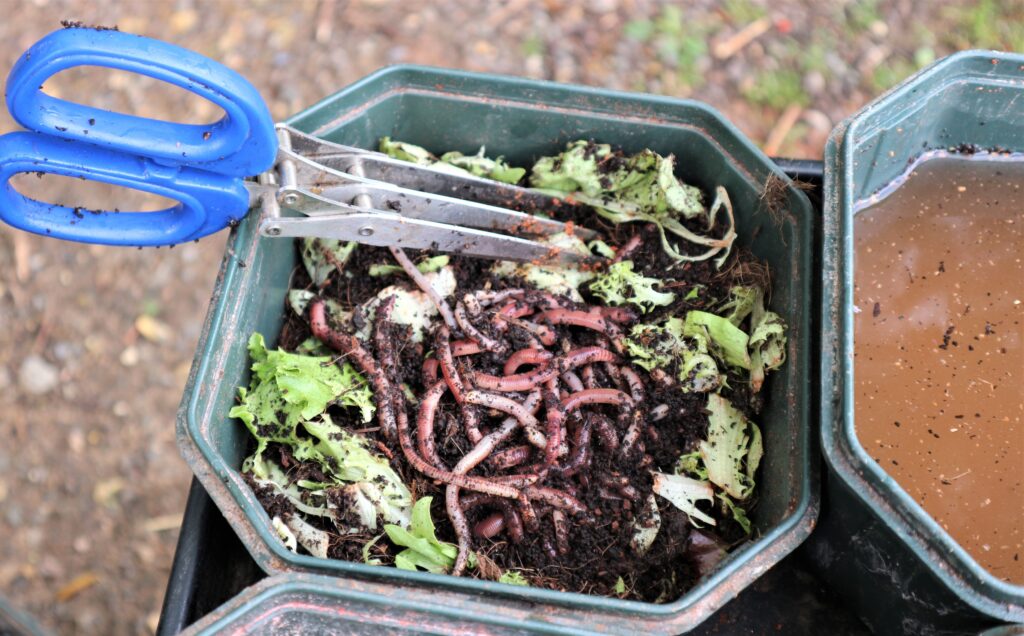

Half dead worms won’t catch many fish and once a few perish, they will soon cause the others to pop their clogs. That’s why I always try to keep my worms in tiptop condition. As soon as I get them home, I switch them into a well aerated bait box and add some greenery, such as lettuce leaves, grass or moss. In hot weather I keep bait like this in a spare fridge I have in my garage, making sure it’s well away from the freezer compartment. In less warm conditions, worms survive okay on my garage floor, making sure they are lightly watered occasionally. It’s a good idea to chop up a few worms as you need them, rather than preparing lots in one go. Freshly diced, well-kept worms are livelier and pull loads more interest than mushy dead ones. Also, if you chop too many into your groundbait mix in one go, it will change the consistency and make everything go stodgy. Sticky feed doesn’t empty out of open-end feeders in a very attractive manner.
DEADLY REDS
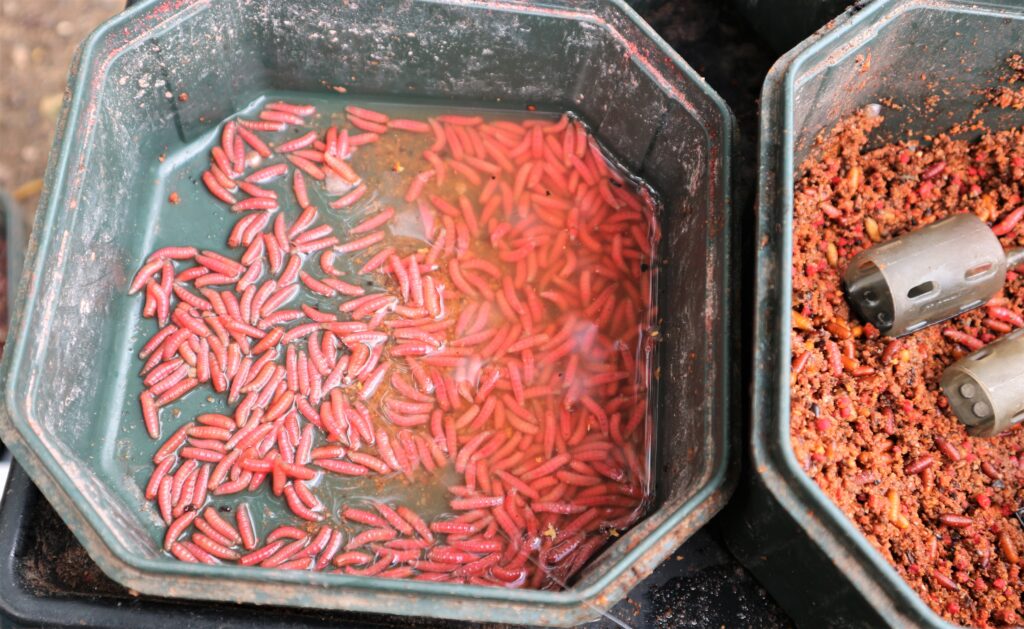

Dead red maggots can work wonders when skimmer fishing. Hand-sized, up to one-pound fish love single or double dead red offerings on a small hook. The reason this works is simple. When feeding chopped worm, the first species to appear in your swim are inevitably small perch. You can waste lots of time casting and reeling these little blighters in, but not so much if you put a dead red maggot on the hook. This motionless bait often gets through perch, just long enough for slower moving skimmers or bigger bream to find it. A few dead reds mixed in with your groundbait will also stay where they land, in similar fashion to casters. Red maggots can be utilised in another form too, by soaking a few in fizzy drink. This is best done in an escape-proof box, taking 30 minutes to make the bait float. Buoyant grubs often come into their own towards the end of busy sessions, on a longer hook length, when the fish are backing away from the feeder.
SKIMMER SKILLS
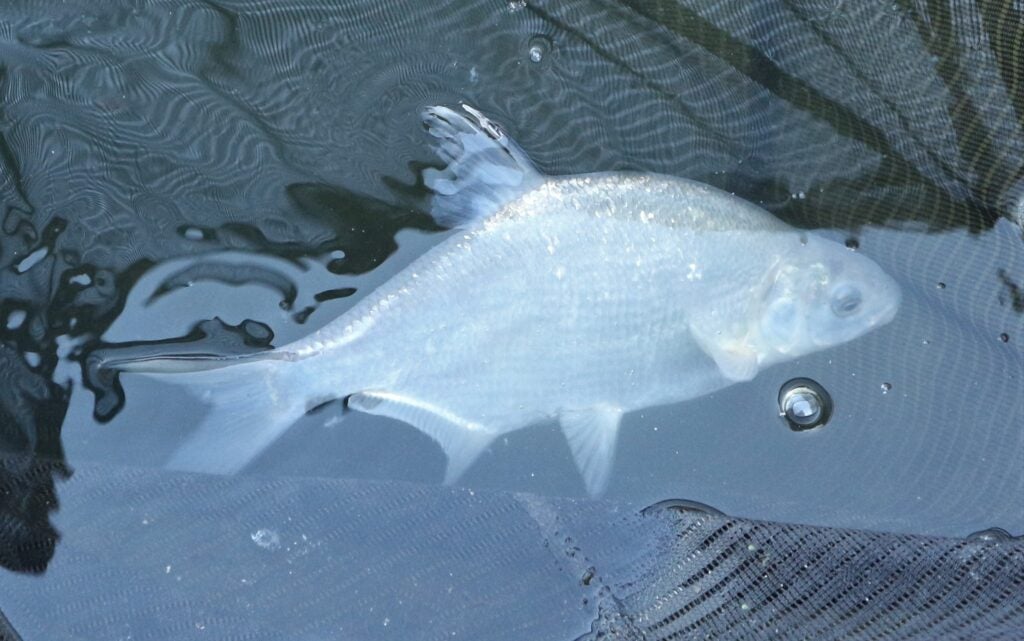

Although groundbait feeder tactics are largely geared up for bream, bigger slab-sided fish don’t always want to feed, particularly in calm and bright conditions. But smaller skimmers will have a go on most occasions, providing you put some cunning into your feeder fishing. These fish respond to being teased with small, regular amounts of grub. That’s why less big feeders work so well, constantly experimenting with what you put in them and what goes on the hook. Adding a few micro pellets to groundbait can help, also directly hooking 4mm or 6mm soft pellets, particularly if perch and other small fish are a problem. Chopped worm can bring swims to life too, along with making your groundbait cloudier. I learnt the latter after a surprise heavy shower once caused my feeder mix to become over-wet. It was just about holding in a cage on the cast and exploding out as it hit the water. It was a shallow swim and the skimmers in it went wild.
ALL ACTION
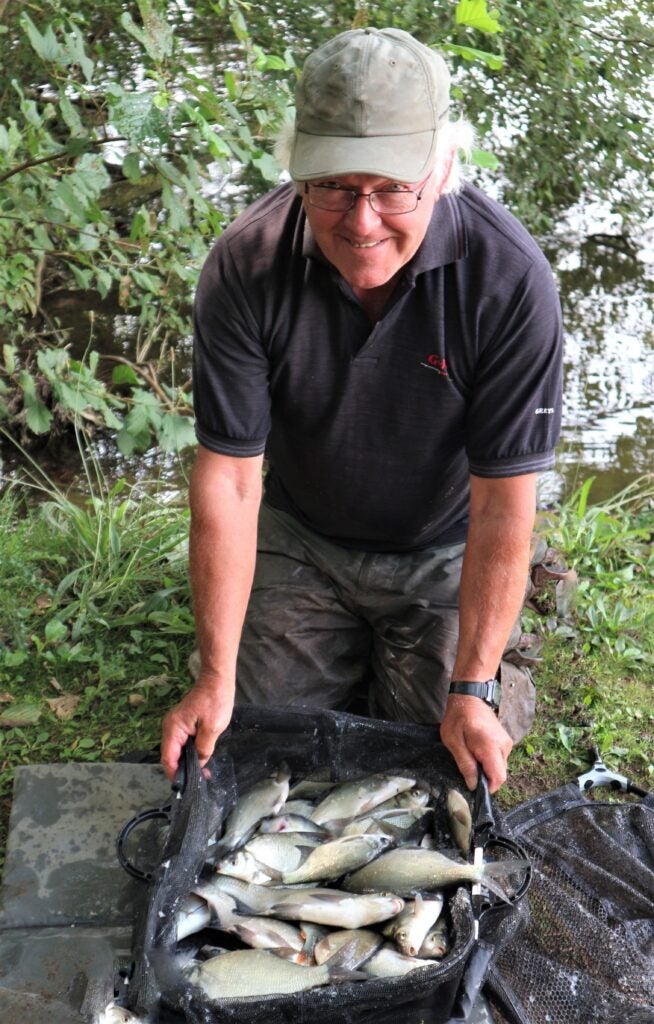

The good thing about a busy groundbait feeder skimmer session is it teaches you a lot that can be applied when proper bream are feeding. Learning to conjure bonus bites by rotating hook baits and experimenting with what goes in the feeder, often keeps fish coming thick and fast. This doesn’t just apply to what you put in your groundbait, but also how the mix breaks down. A dry and fluffy consistency can be good and as recently mentioned, a wet and even cloudier mix can do the business. I find skimmers don’t like too much fishmeal, by the way. Using sweet mixes can prove better, or carefully diluting fish and pellet-based feeds can keep any occupants in your swim grubbing around for longer. Apart from bream, this applies to roach and hybrids, which can be sickened off very quickly by over-rich fishmeal. Although they seem to like this stuff and home in on it very quickly, most species (other than carp) can drift off just as fast.
NEW WINDOWS
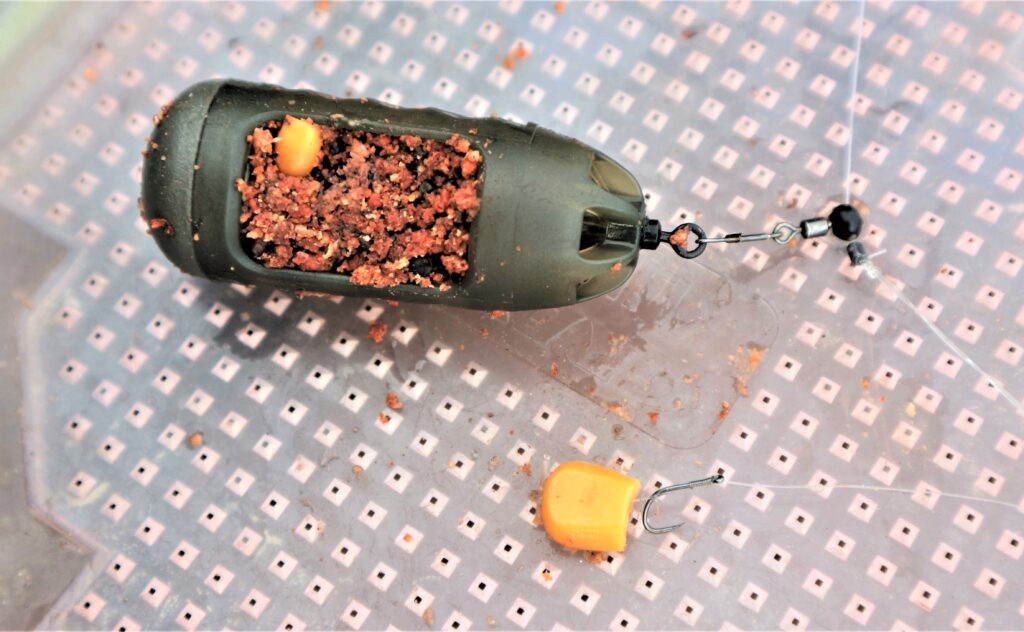

Window feeders have changed the way a lot of anglers fish. Conventional groundbait feeders work okay up to a point, but can get blown off course in windy conditions, or fail to reach the required distance when big fish are a long way off. This relatively new kid on the block casts a lot further and more accurately, due to its streamlined shape and forward-sited nose weight. It also allows neat baits like chopped worm, casters, sweetcorn, or pellets to be wedged inside with just a dab of groundbait. The only major difference I find with this type of feeder, is it works better with shorter hook lengths. A lot of this is due to distance casting, where bites don’t always register with long traces. The fish can mouth or nick your hook bait without any quivertip movement, while if the hook is closer to the feeder’s contents as they empty out, most indications are positive. Window feeders are best when groundbait models can’t reach where you want to go.
FINISHING TOUCHES
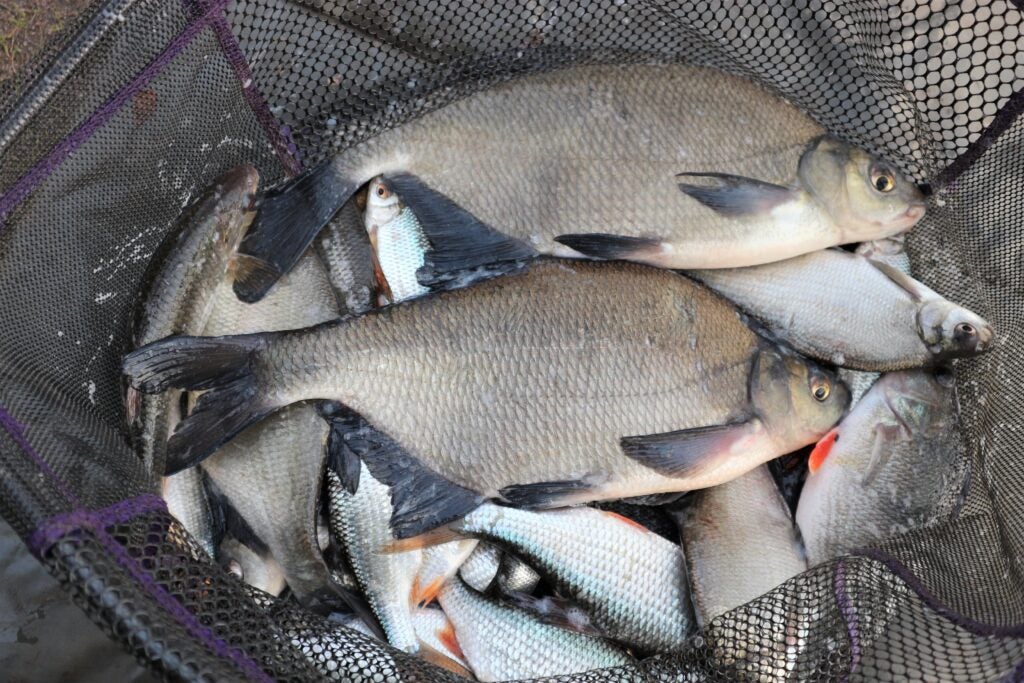

The length of the hook link you use and what you do with it after the feeder has landed is worth extra attention. Although long hook lengths of 100 centimetres can catch lots of fish, especially with floating maggots, as sessions reach their latter stages, most of the time more bites are converted with shorter 30 to 50-centimetre traces. If a take doesn’t materialise after a minute or so, moving the hook bait, so it ends up over the feed that has exited your feeder, often brings an immediate response. Making something happen is always better than waiting for a shoal to arrive, which might never occur if you don’t do enough to encourage a response. Triggering skimmers and other silver fish into feeding first is a good idea. This tidy haul came on a bright sunny day when the conditions looked far from perfect for a groundbait feeder, but having plenty of tricks up my sleeve resulted in a fair catch, with proper bronze bream turning up eventually.










